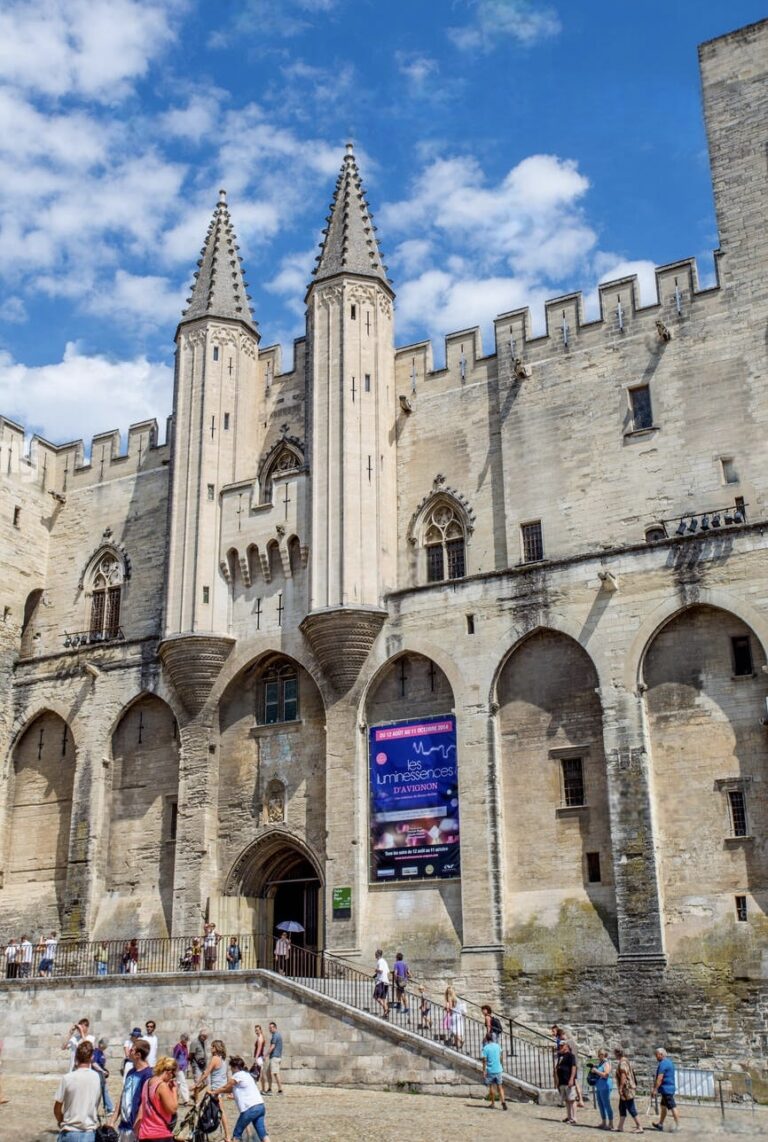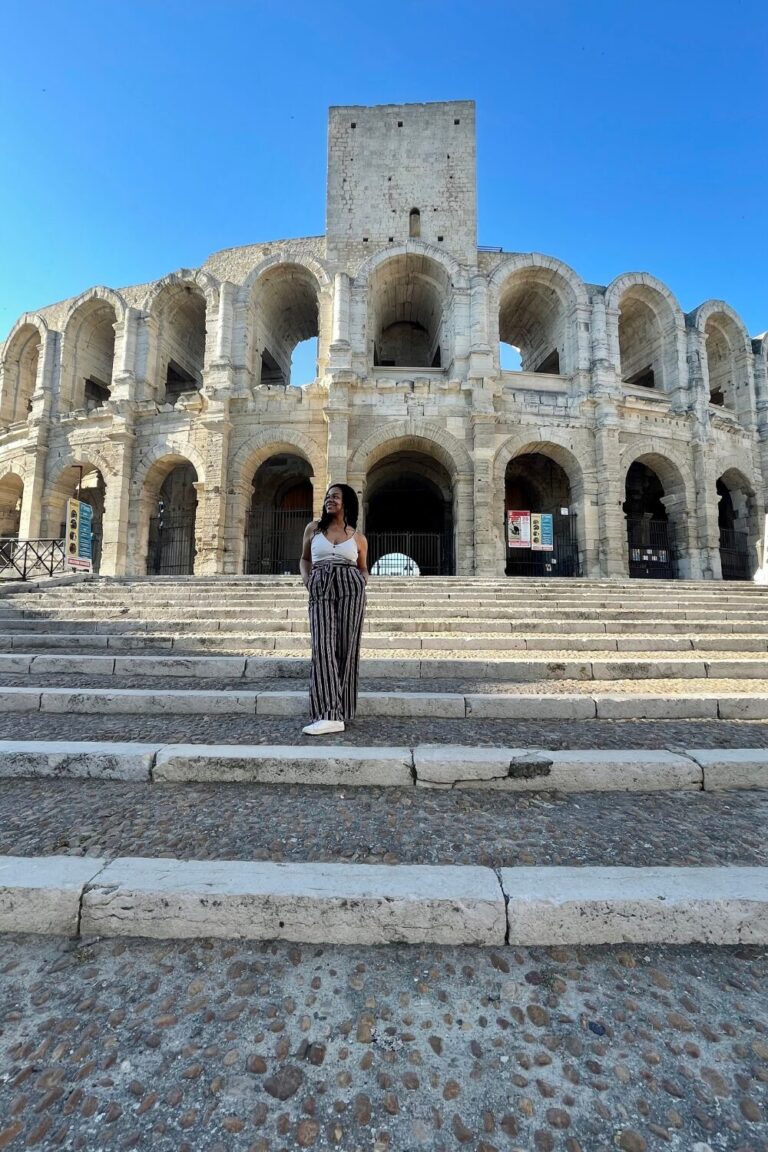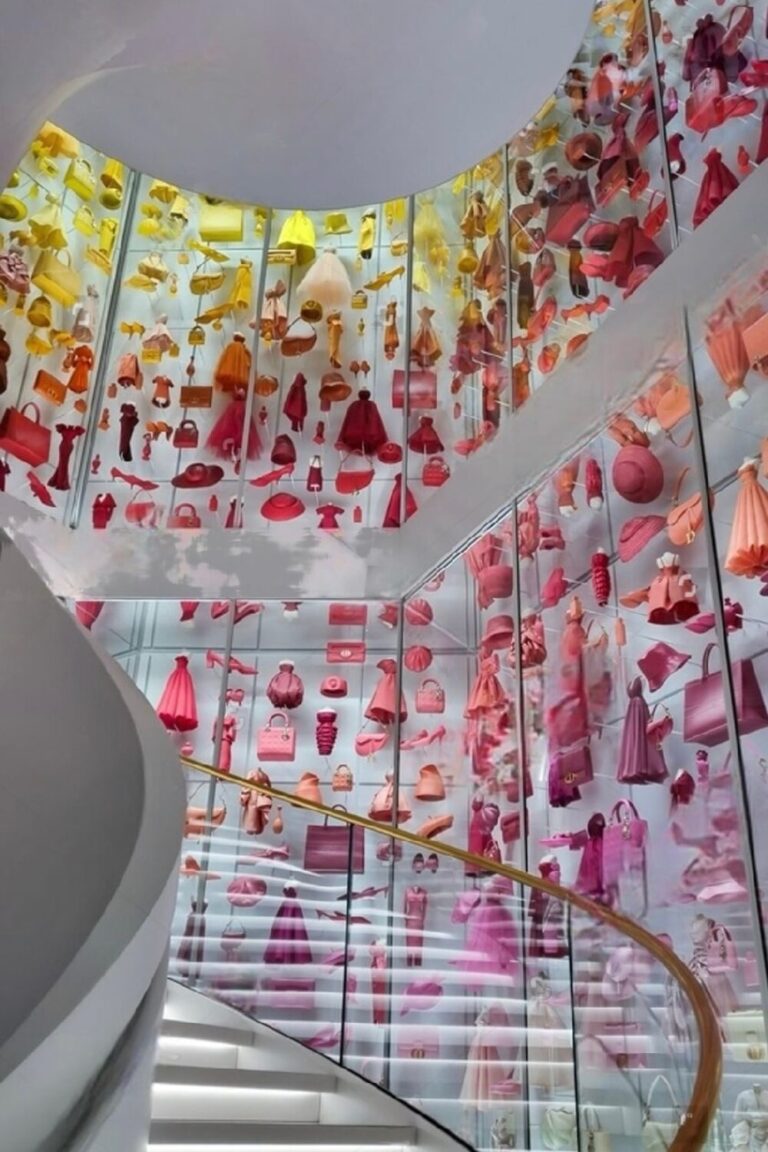The Most Beautiful Southern France Castles to Visit
Last Updated on May 16, 2024 by April Nicole
Southern France Castles
Looking for some beautiful castles in southern France to tour while you’re in the region? This post has them all, including both well-known and obscure.
Many people have fallen in love with chateaux in south of France because of its gorgeous Mediterranean coastline, rich cultural past, and mouthwatering gastronomic pleasures. There are so many fantastic things to see and do in this incredible region of the world, from the glitz of the French Riviera to the untamed beauty of the Pyrenees Mountains.
The south of France is home to numerous castles or châteaux, each of which has a distinguished past and present. Many of these castles date back to the Middle Ages and were constructed as fortifications and homes for French Kings and nobility. Many of these ancient castles are now recognized as historical monuments and are open to tourists. Here, you may discover more about the region’s intriguing past and be in awe of the breathtaking scenery because so many of the castles are perched on hills and rocky outcrops.

The top castles in south of France are listed in this article for your convenience. Although some of these French châteaux are already well-known tourist destinations, there are a few undiscovered gems that you can explore. A map showing these castles in the south of France can be found at the end of the article.
Psst! This blog post contains affiliate links in it which sends me a bit of extra money if you use them… at no extra cost to you. Merci!
How to get around southern France castles
H
Driving is the most convenient way to explore the castles in southern France. I recommend using Discover Cars to reserve a vehicle. They have the most affordable rates, allow you to compare all rental car companies, and let you free of charge change or cancel your reservation. Click here for more information and to check the latest prices.
A day trip from Toulouse to the renowned Comtal castle in the Cité of Carcassonne is also an option.
As an alternative, you can travel by train to the southern French castles. Click here for more information on tickets.
Best Southern France Castles to Visit
These gorgeous castles in the south of France will have an impact on you regardless of whether you enjoy history or have a newfound appreciation for opulent architecture.
Château Royal de Collioure
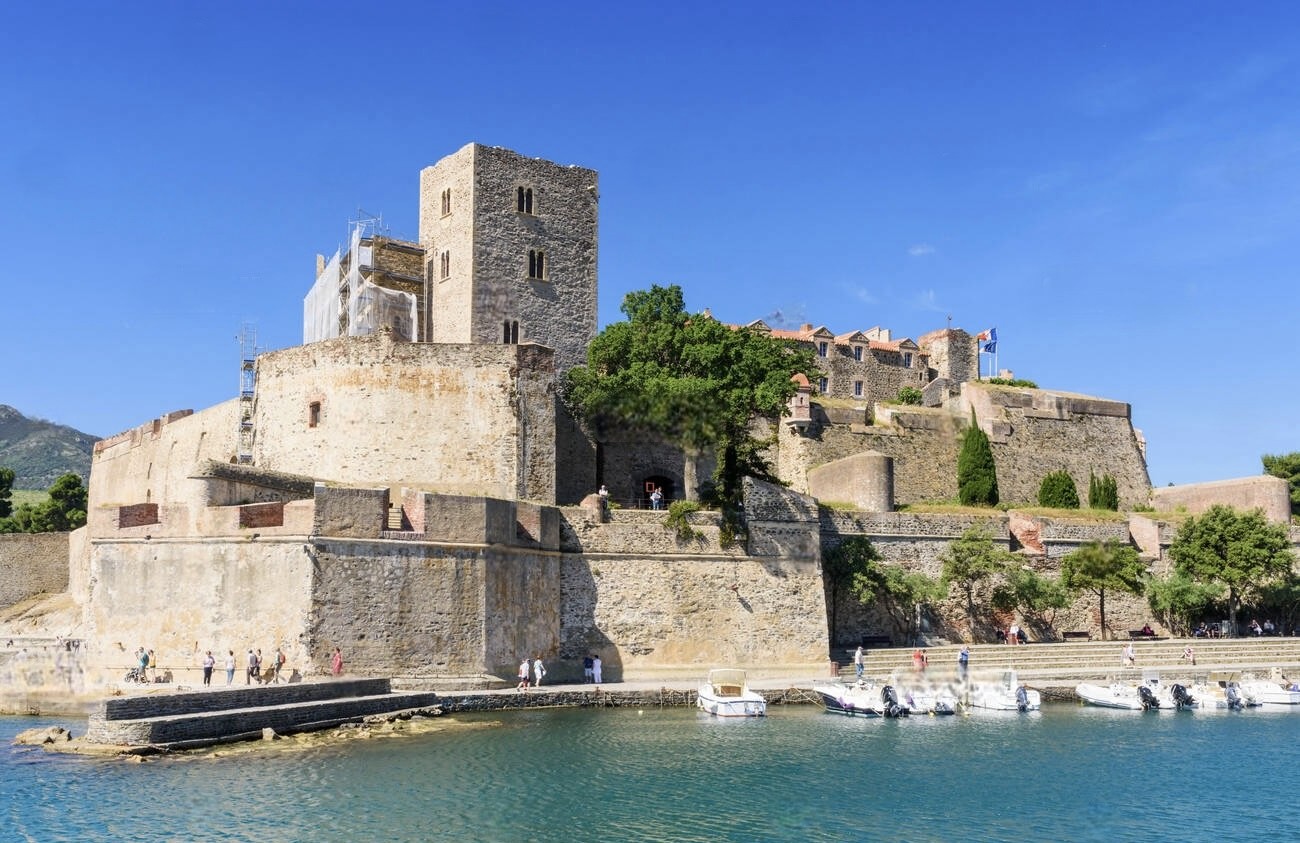
In the Pyrénées-Orientales department’s seaside town of Collioure, you will find this charming ancient château. The first buildings, which make up the current château, date back to the seventh century and are a juxtaposition of at least four castles.
The Counts of Roussillon and later the Kings of Aragon owned this historic seigniorial mansion. The castle was adorned and used as the Kings of Mallorca’s regal palace later in the 13th century.
The Spanish Kings converted the Royal Castle into a fortress in the sixteenth century, greatly enhancing both the castle’s fortifications and its surroundings.
The conflict between the French Bourbons and the Spanish Habsburgs in the 17th century involved Collioure. Vauban gave the Roussillon its present appearance after the Treaty of the Pyrenees (1659), when it was annexed by France. It served as the first military camp with discipline for Spanish Civil War refugees after being converted to a prison in 1939.
Tarascon Castle
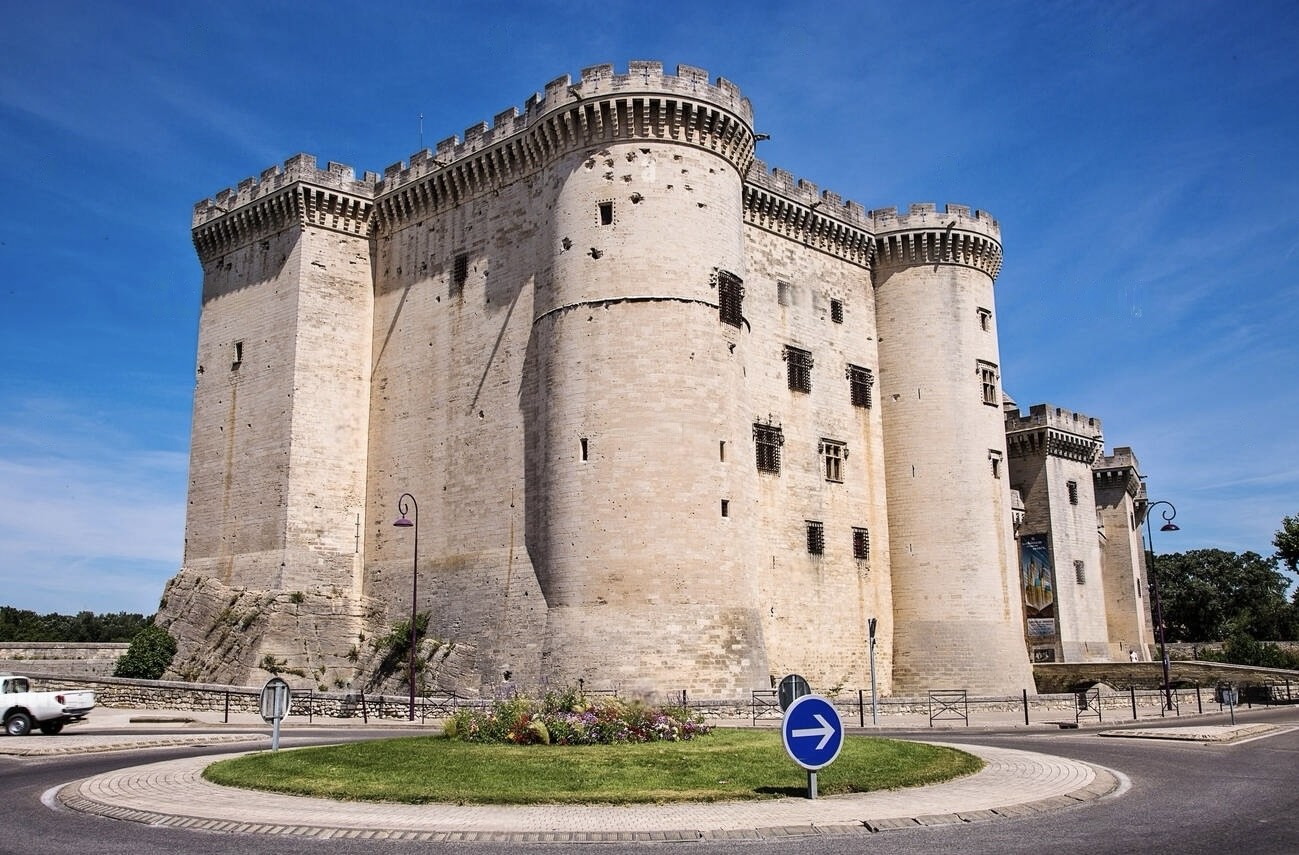
The Dukes of Anjou, counts of Provence, constructed the castle-fortress Château de Tarascon, which is situated in the Bouches-du-Rhône department. One of the most beautiful medieval castles in the south of France and Europe is this gorgeous and well-preserved structure.
On the ruins of a 13th century castle, the Château de Tarascon was constructed around the beginning of the 15th century. The Bastille’s architectural style served as an inspiration for the construction of the new castle, which served both residential and military purposes. The river, the Alpilles, and the Montagnette can all be seen from the château’s terrace.
Between 1447 and 1449, the castle had some renovations to make it more livable under King René d’Anjou, the county of Provence’s successor. He turned the castle into an exclusive gathering place throughout his numerous stays.
The citadel lost its strategic value when René’s heir died, and Louis XI, King of France, received the earldom of Provence. The château served as a state jail starting in the 18th century and continuing until 1926. It is now a part of Tarascon’s property.
Château de la Napoule
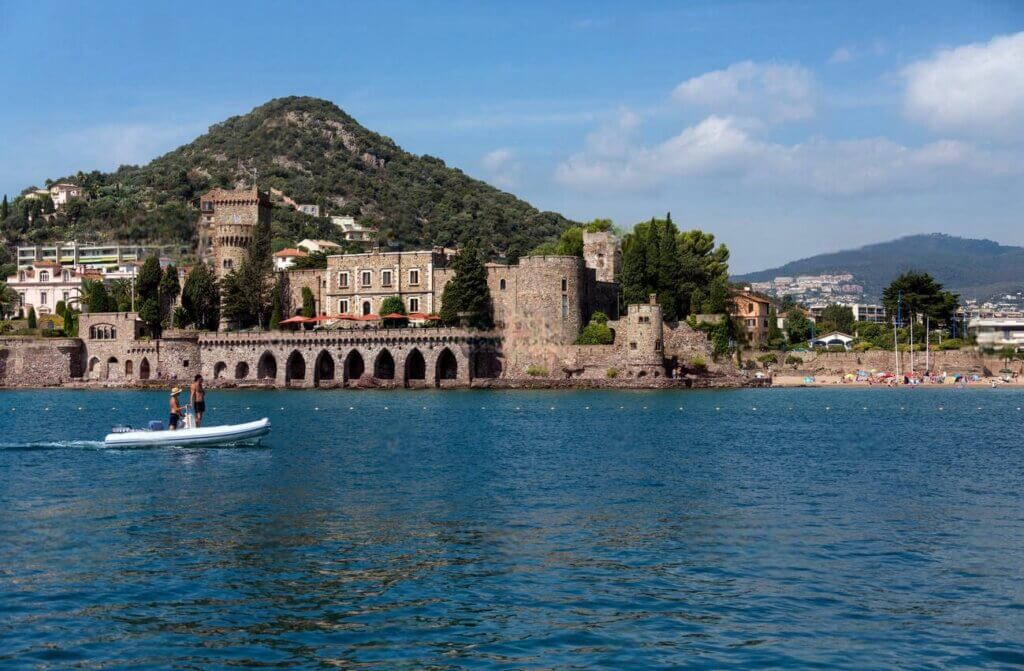
The Alpes-Maritimes department’s Mandelieu-la-Napoule contains the historic medieval stronghold known as Château de la Napoule. The Counts of Villeneuve constructed this typical medieval fortress in southern France right by the sea in 1387.
Throughout its existence, Château de la Napoule saw countless changes and was the scene of invasions, plundering, wars, and revolutions.
The château, which was once a wealthy American couple’s villa and is now partially in ruins, was purchased by the Clews in 1917. They added on to it and refurbished it in their own unique manner.
The grounds and château are designated as historical landmarks. Additionally, the gardens, which are deemed “remarkable,” contain works by visual artists.
Château Borély

Château Borely is a stunning 18th-century building constructed as a residence for a wealthy local businessman named Louis Borely. It is located by the sea in Parc Borely, the most well-known park in Marseille.
The Versailles-style gardens were added to the main property by his descendants. Later, gardens in the English style were planted. The castle, which has belonged to the city of Marseille since the 19th century, was reopened to the public following renovations.
It is now home to three museums: the Museum of Fashion, the Museum of Decorative Arts, and the Museum of Earthenware.
Château de Flaugergues

Numerous French châteaux constructed close to Montpellier during the 1700s were known as “folies.” They were built by affluent businessmen who worked with the French king. The region’s first structure to be constructed, Château de Flaugergues, served as a model for others. The construction of the structure, which was placed on a Roman-era vine location, took 40 years to complete.
Visits to the historical site are fascinating not just for the elaborate arching staircase with hanging key vaults and vibrant tapestries, but also for the long-standing customs that the previous owners upheld.
In addition to producing Flaugergues wine today, the château offers permaculture classes that can be scheduled in advance on its four hectares of well tended gardens.
Palais des Papes
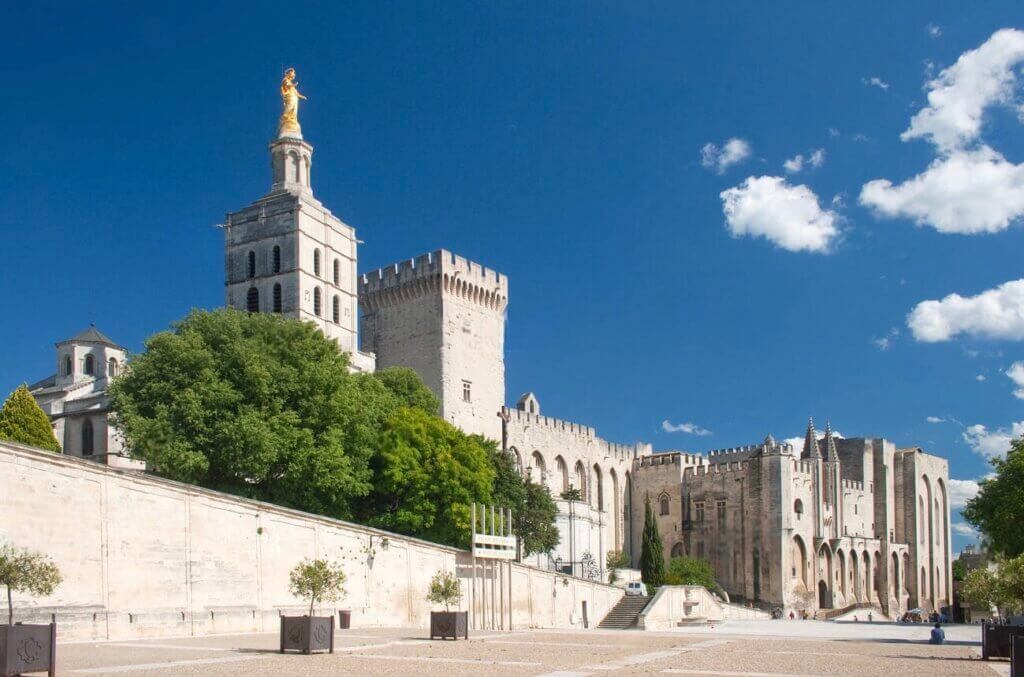
The Palais des Papes at Avignon, although not exactly a château, deserves to be mentioned on this list due to its immense size. The gothic-inspired Palais des Papes served as the Pope’s residence in the 14th century and is one of the biggest and most notable religious buildings in all of Europe.
The UNESCO World Heritage Site, one of France’s most well-preserved and popular landmarks, was home to seven popes before the church’s throne was moved back to Rome.
Surprisingly, the elaborate alabaster building took less than 20 years to finish, and over the years, it has transformed into a venue for themed tours, exhibits, musical performances, and sensory experiences.
Approximately 25 rooms, including chapels with frescoes, ceremonial halls, and the popes’ private quarters, are accessible to the public on guided tours. Avignon’s top attraction and a must-see for anybody with an interest in religion, European history, or architecture.
Click here for more information and to book your tickets to the Palais des Papes.
Château de Boulbon
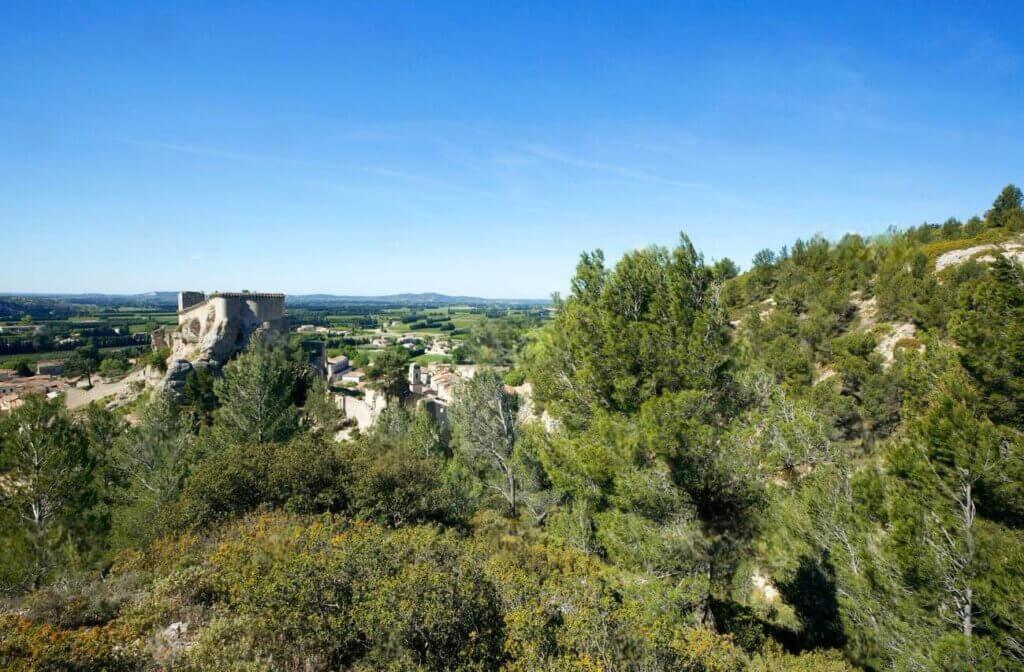
The Castle of Boulbon is located 15 minutes south of Avignon at the base of the Montagnette range. On the boundary between the County of Provence and the Kingdom of France, the castle was constructed in the 11th century in a strategically important area.
King René d’Anjou and Raymon de Turenne are two of the castle’s many owners. The Keep, which has a view of the Rhone Valley, is the oldest portion of the castle. The curtain wall that encloses the dungeon was constructed in a later century.
The elegant mansion, which had thirty rooms, made up the bulk of the castle. From the grounds, it is still possible to see the double spiral staircase’s remnants.
Château d’If
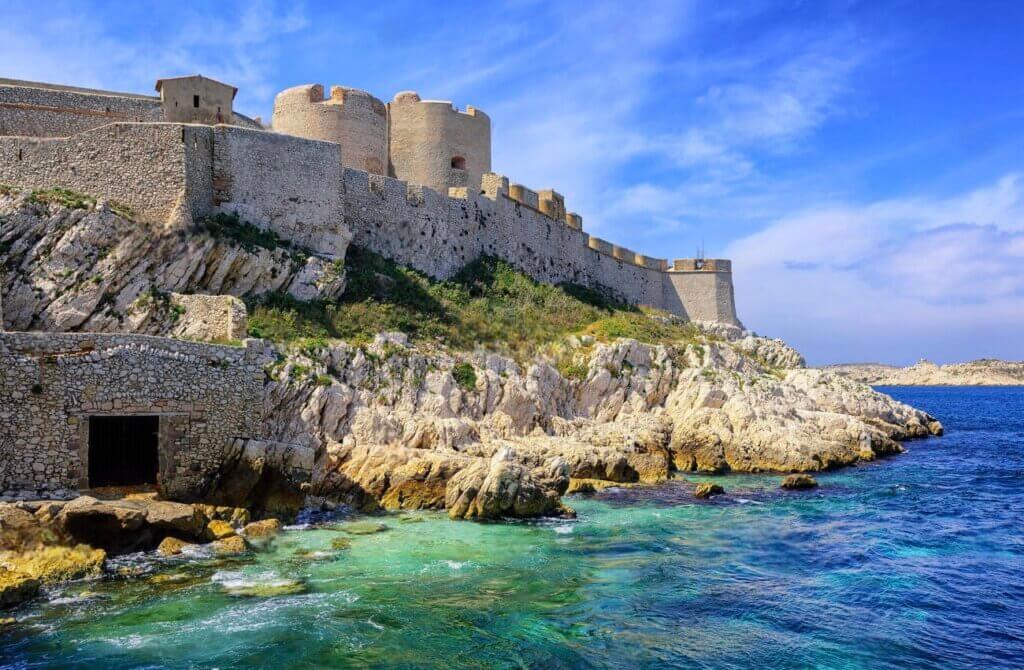
Château d’If, one of the most distinctive châteaux in southern France, is situated on an island off the coast of Marseille, a place where mythology and history collide.
The French fortress on Isle d’If, the smallest island in the archipelago, was constructed in the 16th century and housed prisoners until the late 19th century. It gained notoriety as the setting of Alexandre Dumas’ book “The Count of Monte Cristo.” However, the original castle was constructed in a key site to defend Marseille from naval assaults.
3500 Huguenots were held in the prison, which was formerly among the most notorious in France, and they were treated differently depending on their socioeconomic status.
Today, day trips from Marseille to the château on Île d’If are extremely popular. The intriguing guided tour of the château is provided by one of the many shuttle boats that connect Marseille’s Old Port to Île d’If hourly. Don’t miss the breathtaking view of Marseille from the top of the château!
Château Médiéval de Roquebrune
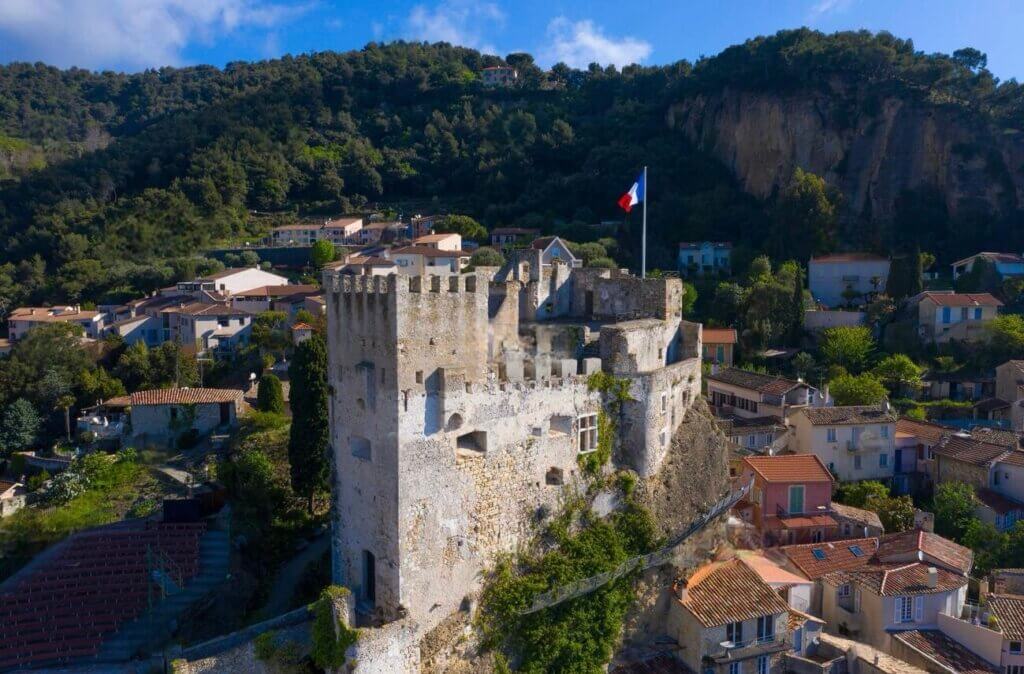
To protect the region from attackers coming from the Mediterranean Sea, the Count of Ventimiglia constructed this stronghold along the Côte d’Azur in the year 970. It provides stunning views over Roquebrune, Cap Martin, and Monaco and is one of the few surviving examples of Carolingian architecture in France.
The Grimaldi family restored the Château Médiéval de Roquebrune to its former splendor in the 15th century, and it still exudes magnificence today. Grab an audio tour and enter to discover secret corridors and exquisitely furnished rooms spread across five storeys. You can also stand on the ramparts to take in the views and get fantastic photo opportunities of one of the best French Riviera castles.
👉READ NEXT: The Best Castles of France to Visit
Château des Baux-de-Provence
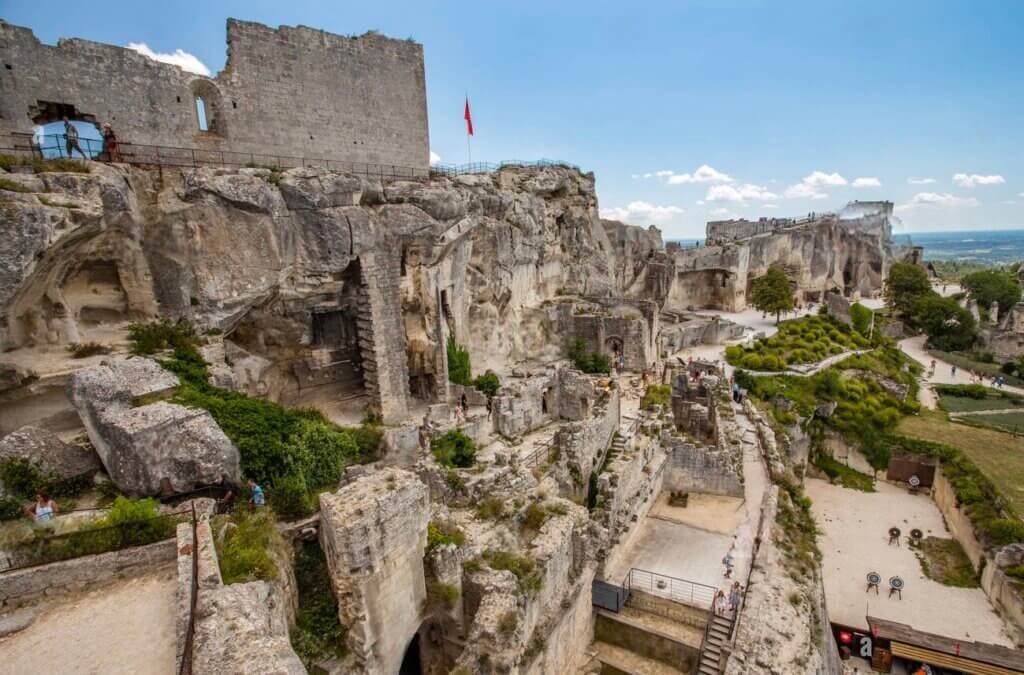
The Château des Baux-de-Provence, one of the most well-known castles in Provence, has a stunning appearance as it perches high above the villages and olive fields of les Alpilles on a rocky ledge.
The abandoned medieval fortress, which dates back to the 10th century, has been attacked numerous times during its history and is currently mostly in ruins. However, what is left offers a glimpse of the tremendous size on which the citadel originally stood.
When you there, you may read up on the castle’s history, tour the halls, and enjoy the views from various vantage points. On the premises, there are siege machines, and you may even see catapults in action.
The fact that there are workshops, exhibits, and even easter egg or treasure hunts for families to participate in over the holidays makes Provence an excellent destination for families with young children.
Les Baux-de-Provence, one of France’s most picturesque villages, is just beyond the castle gates and offers a variety of stores, ice cream parlors, and cafes to explore among the charming cobbled roads.
Château de Roquetaillade
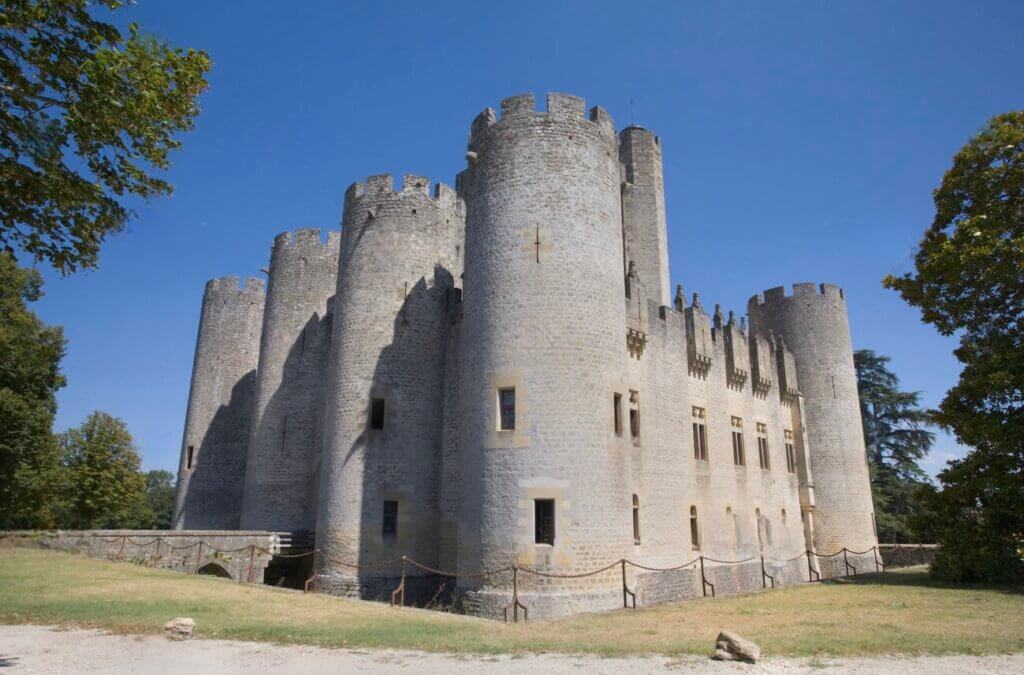
The majestic Renaissance castle from the 14th century in the French region of Aquitaine has six towers and a sizable keep. It is imposing in stature and rich in history.
On his trip to the Pyrenees, Charlemagne is reputed to have constructed the first wooden fortification at this location. Cardinal de la Mothe, the nephew of Pope Clement V, then constructed the current structure.
The most popular castle in the area is Castle Roquetaillade, which was later renovated by renowned architect Viollet-le-Duc (who also assisted in bringing Chateau Comtal back to life).
Every afternoon (during the tourist season) at 3 or 4 pm, you can take a guided tour of the historical monument, which is brimming with artifacts, lovely rooms, and Moresque decor. Additionally, the castle makes its own mouth watering wines, Chateaufort de Roquetaillade, which may be the ideal keepsake to remember your time there.
Château de Montauban

French author and poet Alphonse Daudet, is credited with finding refuge and inspiration at Château de Montauban, the former mansion of the Ambroy family in Fontvielle, close to Arles.
Daudet, a writer of brief, emotional stories about the south France, spent several months here with his wife. His “Lettres de mon moulin” collection of writings features descriptions of the opulent home.
With its gabled façade and gorgeous grounds, the 19th-century chateau in southern France is open to visitors today. They may even take part in a summer event there. During the summer, visitors can take a guided or unguided tour of the inside museum, which is devoted to the history and archaeology of the village.
Foix Castle
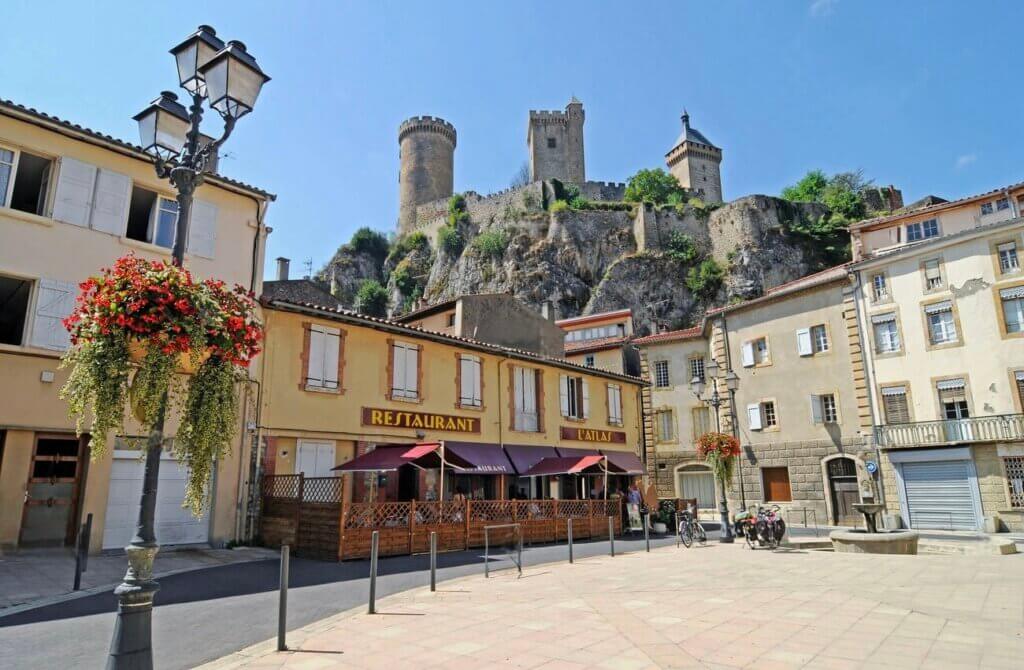
This castle, perched atop a rock and providing a view of the town of Foix, was previously referred to as impenetrable since intruders were unable to breach its thick walls.
Even though the Foix Castle’s architectural design originates to the 7th century, its initial details didn’t appear until 987, and afterwards it was home to counts and kings of France and Spain. Many people would remain here to plan their defense during tumultuous times, and it also developed into a haven for Cathars fleeing persecution. Later on, it was used as a garrison, a prison, and a museum.
These tales are now brought to life for visitors to the castle by dressed-up characters. Families can explore Cathar relics, observe stone carving and forging, or learn about prior occupants in the museum. Despite the four-hour tour’s length, the time just flies by because there is so much to see and do.
Château de Lagarde

Near the village of Lagarde stands the partially collapsed Château de Lagarde, which commands a view of the valley. The castle was originally documented in the 10th century, and over time it underwent modifications and enlargements that included the addition of Gothic elements. The curtain wall and a few towers were all that remained of the castle after it was partially destroyed during the French revolution.
Château de Vauvenargues
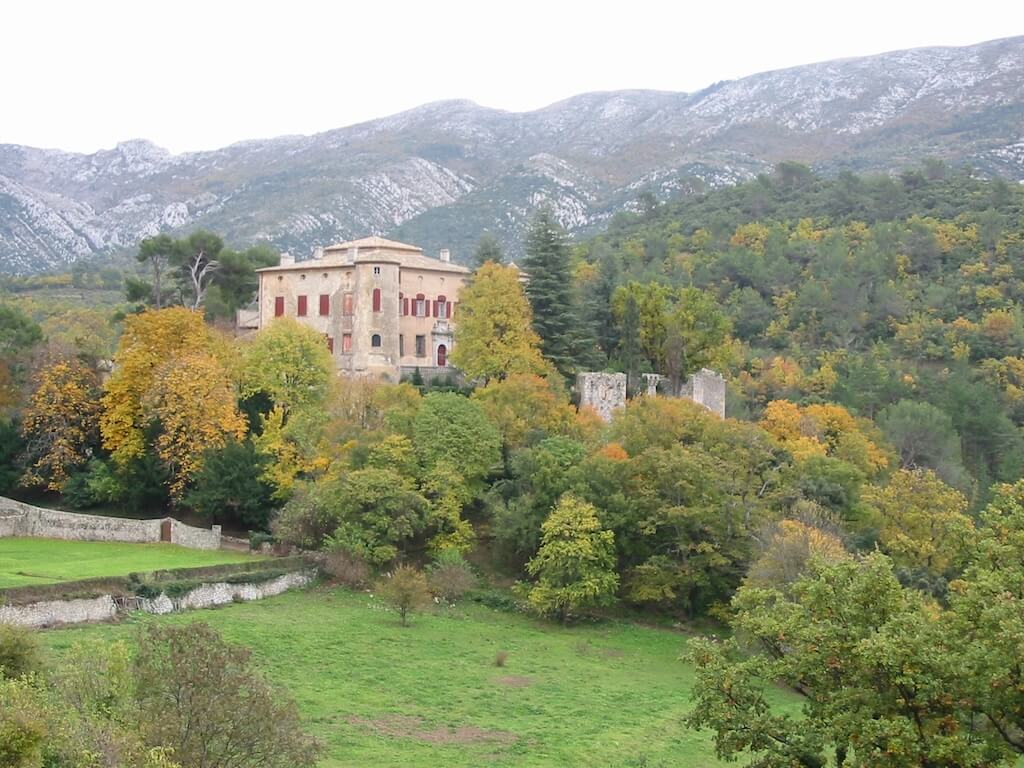
Pablo Picasso lived and died at the fortified bastide known as Chateau de Vauvenargues, which is located in Provence. In the Middle Ages, the mansion served as the residence for the Counts of Provence and the Archbishops of Aix. It was changed into a family home for the Marquis de Vauvenargues in the 17th century.
Pablo Picasso, a painter, purchased the home in 1958 in order to have a more peaceful home after living in Cannes. On the property, Pablo Picasso and his wife Jacqueline are both interred. The home is still the Picasso family’s private abode and is not accessible to the general public.
Château de Grimaldi – Musée Picasso

According to legend, a Greek fortification once stood where the Château Grimaldi in Cagnes-sur-Mer now stands. An ancestor of the current monarch of Monaco, Rainier Grimaldi, constructed the fortress that is still standing today in 1309.
On a hilltop overlooking the city, the castle, built from stone quarried nearby, is located. Formerly used as a barracks and hospital, it now contains the Grimaldi Castle and Museum, displaying collections of finely painted murals, modern artwork from all around the world, and an exhibit on olive trees.
It is accessible via shuttle from the city’s main bus station and is open every day except Tuesday. On the same day, combine the visit with a double pass to the adjacent Renoir Museum.
Château Comtal

Within the Cité de Carcassonne stands the magnificent Château Comtal, also known as the Count’s Castle. Over the western section of the city’s Roman walls, this magnificent medieval fortress was constructed in the 12th century. In 1226, a rectangular defensive enclosure protected the fortress.
The Carcassonne Castle has an interior courtyard and is rectangular in design. The remnants of the Counts’ private chapel are still visible, and a museum housing an intriguing collection of Cathar-related items is also open to visitors. A substantial moat separates the castle from the city, and two barbicans guard it.
There is a cost to enter the ramparts and Cathar castles of Carcassonne. Buy your tickets online to save time.
Châteaux de Lastours
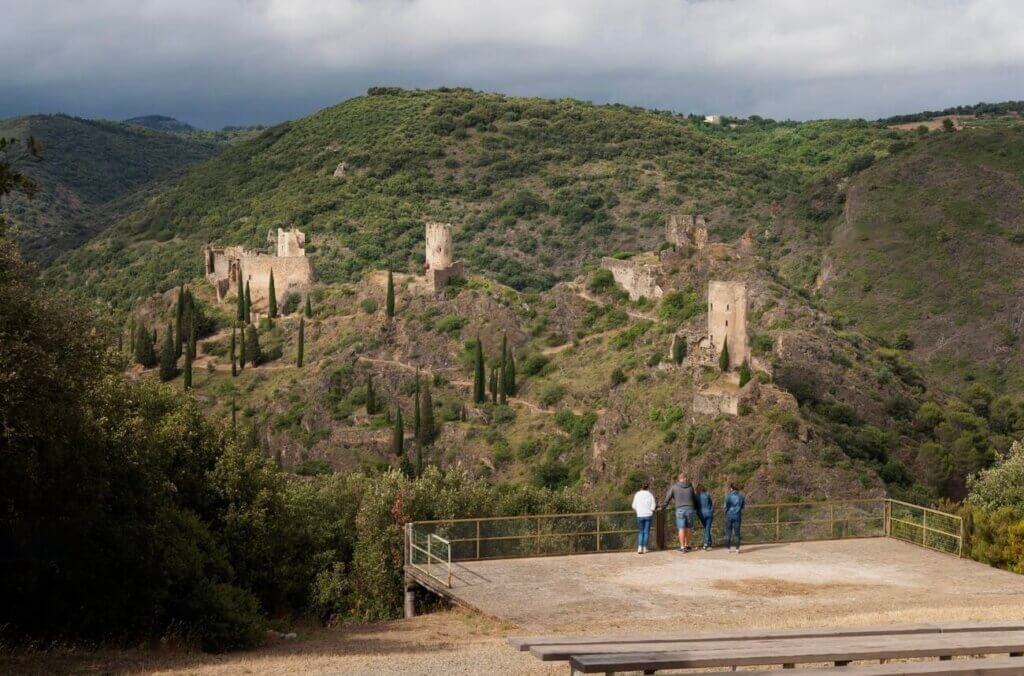
The four medieval castles that make up the Cathar complex of Châteaux de Lastours are now in ruins. The complex, which was constructed in the first decade of the 17th century, was designed as a strategic, fortified commune and played a significant role in the area’s defence, as shown by its location on a rocky outcrop above the hamlet.
The castles, which were formerly known as Cabaret, Tour Regine, Surdespine, and Quertineux, served as gathering spots for the French crusaders during the Cathar Crusade. Due to its significance as an archaeological site, the settlement of Lastours is also worthwhile seeing.
Southern France Castles Map
To add this map to your Google Maps account, click the ‘Star’ icon next to the map name. You can then view it on your cell phone or computer by heading to your Google Maps account, click the menu and add it to ‘Your Places’.
FAQs about southern France castles
What are the best castles in southern France?
The Palais des Papes in Avignon, Château Comtal in Carcassonne, Château de Foix in Foix, Castle of Val in the town of Lanobre, and Château de Bonaguil in Saint-Front-Sur-Lémance are some of the best castles in Southern France.
What is the largest castle in southern France?
What is the most beautiful château in south France?
One of the most stunning castles in southern France is Château de Lourmarin. It is situated in the charming village of Lourmarin, in the department of Vaucluse.
What makes a French house a château?
During the 13th and 14th centuries, a château was a castle or other building in France designed more for defense than for habitation. Later, the term was used to describe any seignorial residence, which is to say, a country house with any level of pretense.
Final Thoughts on Southern France Castles
There are many more stunning southern France castles, but I hope that this list encourages you to learn more about the fascinating histories of these locations and the French history that molded the region we know today.


